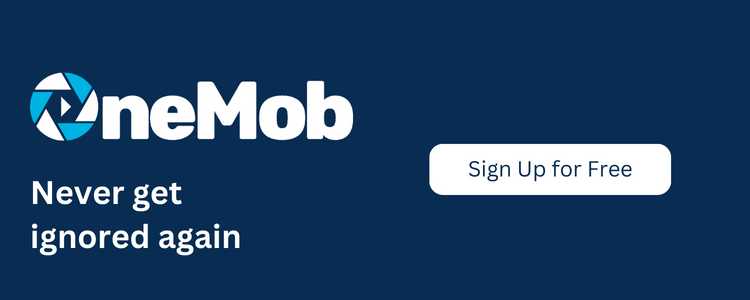Introduction
If you’re in the business of sales, chances are you’ve heard the term “sales enablement platform” thrown around quite a bit. But what exactly does it mean? In simple terms, a sales enablement platform is a software solution that provides sales teams with the tools they need to sell more effectively. This includes everything from training and coaching resources to content management systems, analytics, and more.
Why is it important for businesses to invest in a sales enablement platform? The answer is simple: it can help increase revenue. According to a recent study, companies that use a sales enablement platform experience a 350% increase in content usage, a 275% boost in conversions, and a 65% increase in revenue generated by new reps. These impressive statistics are just some of the many reasons why businesses of all sizes are turning to sales enablement platforms to gain a competitive edge.
The Benefits of Sales Enablement Platforms
One of the primary benefits of a sales enablement platform is that it helps to streamline the sales process. By providing sales teams with the tools they need to sell more effectively, businesses can reduce the amount of time spent on administrative tasks and focus more on closing deals. Additionally, sales enablement platforms can help to improve collaboration between sales and marketing teams, ensure that sales reps have access to the most up-to-date content, and provide valuable analytics that can inform decision-making.
Another key advantage of sales enablement platforms is that they help to create a more personalized sales experience. By leveraging data and analytics, sales reps can better understand their customers’ needs and preferences, and tailor their approach accordingly. This can lead to increased engagement, higher conversion rates, and ultimately, more revenue for the business.
Overview of the Article’s Contents
In this article, we’ll take a deep dive into the world of sales enablement platforms. We’ll explore everything from the basics of what a sales enablement platform is and why it’s important, to the specific features and benefits of some of the top platforms on the market. Along the way, we’ll share tips and best practices for getting the most out of your sales enablement platform, as well as some lesser-known facts and curiosities about this rapidly-growing industry.
So whether you’re a seasoned sales professional or just starting out, get ready to learn everything you need to know about sales enablement platforms and how they can help take your sales game to the next level.

Image source: Pexels
What is a Sales Enablement Platform?
A sales enablement platform is a software solution designed to help salespeople increase their effectiveness and productivity by providing them with the right content, tools, and insights they need to engage with prospects and close deals. It’s an all-in-one platform that streamlines and optimizes the sales process, from lead generation to post-sale activities, by providing personalized and relevant information to prospects and customers.
Key features of sales enablement platforms
One of the most important features of sales enablement platforms is content management. They offer a centralized repository of marketing and sales collateral, such as presentations, case studies, and product sheets, that can be accessed, customized, and shared by sales reps. They also provide analytics and reporting capabilities, allowing sales managers to track the usage and effectiveness of these assets.
Another key feature is sales readiness. Sales enablement platforms offer training and coaching resources, such as onboarding materials, product demos, and role-playing exercises, to help sales reps develop the skills and knowledge they need to succeed. They also provide tools for sales managers to assess and improve the performance of their team, such as competency assessments, performance metrics, and feedback mechanisms.
How sales enablement platforms differ from other sales tools
Sales enablement platforms are often compared to other sales tools, such as customer relationship management (CRM) systems, marketing automation software, and sales engagement platforms. While these tools may have some overlapping features, they serve different purposes and have different goals.
CRM systems, for example, focus on managing customer data, sales pipeline, and customer interactions, while sales enablement platforms focus on content management, sales readiness, and analytics. Marketing automation software, on the other hand, is designed to automate and optimize marketing processes, such as lead nurturing and email campaigns, while sales enablement platforms are focused on sales processes and activities.
Examples of popular sales enablement platforms
OneMob is a powerful sales enablement platform that provides personalized and interactive video experiences to prospects and customers. With OneMob, sales reps can create and send videos that capture attention, build rapport, and drive action. The platform also offers content management, analytics, and sales readiness capabilities, making it a comprehensive solution for sales teams.
Seismic is another popular sales enablement platform that offers content automation, personalized content, and analytics capabilities. It’s particularly well-suited for large enterprises with complex sales processes and multiple product lines. Seismic also integrates with other sales tools, such as CRMs and marketing automation software, to provide a seamless experience for sales reps.
Other notable sales enablement platforms include Highspot, Showpad, and Brainshark, each with its own unique set of features and capabilities.
Overall, sales enablement platforms are becoming increasingly important for businesses of all sizes and industries that want to stay competitive and improve their sales performance. By providing sales reps with the right content, tools, and insights, these platforms can help businesses close more deals, increase revenue, and drive growth.
Why Use a Sales Enablement Platform?
A sales enablement platform is a powerful tool designed to streamline the sales process and drive results. By leveraging cutting-edge technology, sales enablement platforms offer a wide range of benefits, from improving sales productivity and customer engagement to enhancing sales team collaboration. Let’s explore some of the key reasons why your business should consider using a sales enablement platform.
Benefits of using a sales enablement platform
One of the most significant advantages of using a sales enablement platform is the ability to centralize all sales-related content, making it easily accessible for your sales team. This, in turn, helps eliminate time-consuming tasks such as searching for the right content or updating outdated materials. By automating these tasks, sales reps can focus on their core responsibilities, ultimately resulting in increased productivity and efficiency.
Sales enablement platforms also provide valuable insights and analytics, allowing sales reps to track their performance and adjust their strategies accordingly. With real-time data, sales reps can identify which materials are resonating with their customers, which tactics are working, and which areas need improvement. This data-driven approach enables sales teams to work smarter, not harder, increasing their chances of closing deals and meeting their sales targets.
How sales enablement platforms improve sales productivity
Sales enablement platforms offer a wide range of tools and resources designed to boost sales productivity. From personalized emails and microsites to interactive content and video messaging, sales enablement platforms provide sales reps with everything they need to communicate effectively with their customers. By automating these tasks, sales reps can focus on building relationships with their customers, rather than spending hours creating content or searching for the right materials.
Moreover, sales enablement platforms offer a seamless experience, allowing sales reps to access all the tools they need from a single platform. This streamlined approach eliminates the need to switch between different applications or tools, reducing the risk of errors and increasing productivity. By providing sales reps with the right tools at the right time, sales enablement platforms empower them to be more productive and efficient, ultimately driving better results for your business.
How sales enablement platforms improve customer engagement
Sales enablement platforms provide a personalized and engaging experience for customers, increasing their chances of converting. By leveraging interactive content, personalized messaging, and microsites, sales reps can provide a truly personalized experience for their customers, tailoring their approach to their unique needs and interests. This, in turn, helps build trust and credibility, ultimately resulting in higher conversion rates.
Moreover, sales enablement platforms provide sales reps with valuable insights into their customers’ behavior and preferences, allowing them to tailor their approach accordingly. By providing customers with relevant and valuable content, sales reps can establish deeper connections and foster long-term relationships, ultimately leading to increased customer loyalty and retention.
How sales enablement platforms improve sales team collaboration
Sales enablement platforms provide a collaborative environment for sales teams, enhancing communication and collaboration. By providing a centralized platform for all sales-related content, sales reps can easily share materials, provide feedback, and collaborate on projects. This, in turn, helps build a culture of collaboration, ultimately leading to increased productivity and better outcomes for your business.
Moreover, sales enablement platforms provide sales managers with valuable insights into their team’s performance, allowing them to identify areas that need improvement and provide targeted coaching and training. By fostering a culture of continuous improvement, sales enablement platforms help sales teams stay ahead of the curve and drive better results for your business.

Image: Sales team working together
In conclusion, sales enablement platforms offer a wide range of benefits for businesses of all sizes, from improving sales productivity and customer engagement to enhancing sales team collaboration. By leveraging cutting-edge technology and providing valuable resources and insights, sales enablement platforms empower sales reps to work smarter, not harder, ultimately driving better results for your business.
What are you waiting for? Sign up for a free trial of OneMob and see for yourself how our sales enablement platform can revolutionize your sales game!

Image: Sales enablement platform features
Note: Images are for illustrative purposes only and may not reflect the actual features or capabilities of OneMob’s sales enablement platform.
Choosing the Right Sales Enablement Platform
Now that you understand the benefits of using a sales enablement platform, it’s time to choose the right one for your business. With so many options on the market, it can be challenging to know where to start. Here are some key factors to consider when selecting a sales enablement platform:
Features and Functionality
Look for a platform that offers the features and functionality that align with your sales goals and objectives. Determine what you need in terms of content management, analytics, and integrations with other tools you use. For example, if you want to streamline your content creation process, look for a platform that offers templates and collaboration tools.
User Experience
Choose a platform that is easy to use and intuitive for your sales team. Your team should be able to access the information they need quickly and easily, without having to spend hours learning how to use the platform. Look for a platform with a clean interface and simple navigation.
Scalability
Consider the scalability of the platform. As your business grows, your sales enablement needs will also evolve. Look for a platform that can grow with your business and adapt to your changing needs.
Integration
Ensure the platform integrates with your existing tools and systems. You don’t want to have to switch between different platforms to access the information you need. Look for a platform that can integrate with your CRM, marketing automation software, and other tools you use.
When evaluating different sales enablement platforms, it’s important to keep your specific needs and goals in mind. Don’t be swayed by flashy features that you don’t need or won’t use.
There are also some common mistakes to avoid when choosing a sales enablement platform:
- Choosing a platform without involving your sales team: Your sales team is the one that will be using the platform every day, so it’s important to get their input.
- Not considering the platform’s security: Make sure the platform is secure and can protect your sensitive information.
- Choosing a platform based solely on price: While cost is important, it shouldn’t be the only factor you consider.
Once you’ve selected a sales enablement platform, it’s essential to get the most out of it. Here are some tips:
- Train your team: Make sure your sales team knows how to use the platform effectively.
- Measure your results: Use the analytics provided by the platform to measure your success and make adjustments as needed.
- Continuously update your content: Keep your content fresh and relevant to keep your audience engaged.
Choosing the right sales enablement platform can make a significant impact on your sales productivity, team collaboration, and overall success. Take the time to evaluate your options and choose a platform that aligns with your goals and objectives.

Image: A sales enablement platform should offer the features and functionality that align with your sales goals and objectives.
Implementing a Sales Enablement Platform
Now that you have selected the right sales enablement platform for your business, it’s time to focus on the implementation process. Implementing a sales enablement platform can be challenging, but if done right, it can transform your sales team’s productivity and results. Here are some steps to ensure a successful implementation:
1. Get Buy-In from Sales Team Members
Before rolling out the sales enablement platform, it’s important to get buy-in from the sales team members. This can be achieved by involving them in the decision-making process, addressing their concerns, and highlighting the benefits of the platform. By doing so, the sales team will feel valued and more likely to adopt the platform.
2. Training and Onboarding Best Practices
Proper training and onboarding are essential for the successful implementation of a sales enablement platform. The vendor should provide comprehensive training to the sales team members, covering all the features and functionalities of the platform. It’s also a good idea to assign a dedicated trainer or coach to assist the sales team during the onboarding process.
Additionally, it’s important to ensure that the sales team members have access to all the resources they need, such as user guides, FAQs, and support channels. By doing so, they will be able to use the platform efficiently and effectively.
3. Common Challenges and How to Overcome Them
During the implementation process, there are some common challenges that businesses may face. One of the biggest challenges is getting the sales team to adopt the platform. To overcome this challenge, it’s important to show the sales team how the platform can benefit them and make their job easier.
Another challenge is ensuring that the sales team members are using the platform correctly. This can be overcome by providing regular training and conducting performance reviews to ensure that the sales team is using the platform effectively.
Finally, it’s important to ensure that the sales enablement platform is integrated with other sales tools and systems. This can be achieved by working closely with the IT department and the vendor to ensure seamless integration.
Implementing a sales enablement platform requires careful planning, proper training, and ongoing support. By following these best practices, businesses can ensure a successful implementation and reap the benefits of a more productive and efficient sales team.

Table: Best practices for implementing a sales enablement platform
| Best Practices | Details |
|---|---|
| Get buy-in from sales team members | Involve the sales team in the decision-making process, address their concerns, and highlight the benefits of the platform. |
| Training and onboarding | Provide comprehensive training and assign a dedicated trainer or coach to assist the sales team during the onboarding process. |
| Overcoming common challenges | Show the sales team how the platform can benefit them, ensure they are using the platform correctly, and integrate the platform with other sales tools and systems. |
“Proper training and onboarding are essential for the successful implementation of a sales enablement platform.”
Conclusion
Implementing a sales enablement platform can transform the way businesses approach sales, creating more efficient and effective processes that generate better results. Throughout this article, we have explored the many benefits of sales enablement platforms, including streamlined content creation and distribution, improved sales team collaboration, and enhanced customer engagement.
Perhaps most importantly, sales enablement platforms can provide valuable insights into customer behavior and preferences, enabling sales teams to tailor their approach to individual customers and increase the likelihood of conversion.
Final Thoughts on Selecting and Implementing a Sales Enablement Platform
Selecting the right sales enablement platform for your business is crucial to ensuring its success. Consider factors such as your team’s needs and skill sets, budget, and the platform’s features and capabilities. It’s also important to involve your sales team in the selection process to gain buy-in and ensure a smooth transition.
Proper training and onboarding are also essential to ensure that your team is equipped to effectively use the platform and maximize its benefits. Look for a platform that offers comprehensive training and support to ensure a successful implementation.
Call to Action
If you’re looking to revolutionize your sales game and stay ahead of the competition, consider adopting a sales enablement platform. With its many benefits and potential for improved results, it’s a game-changer for businesses of all sizes.
At OneMob, we offer an intuitive and customizable sales enablement platform designed to help businesses create engaging microsites that spark meaningful customer interactions. Sign up for a free account today and see the difference it can make for your sales team.

Don’t miss out on the opportunity to supercharge your sales strategy and take your business to the next level. With the right sales enablement platform, the sky’s the limit!







